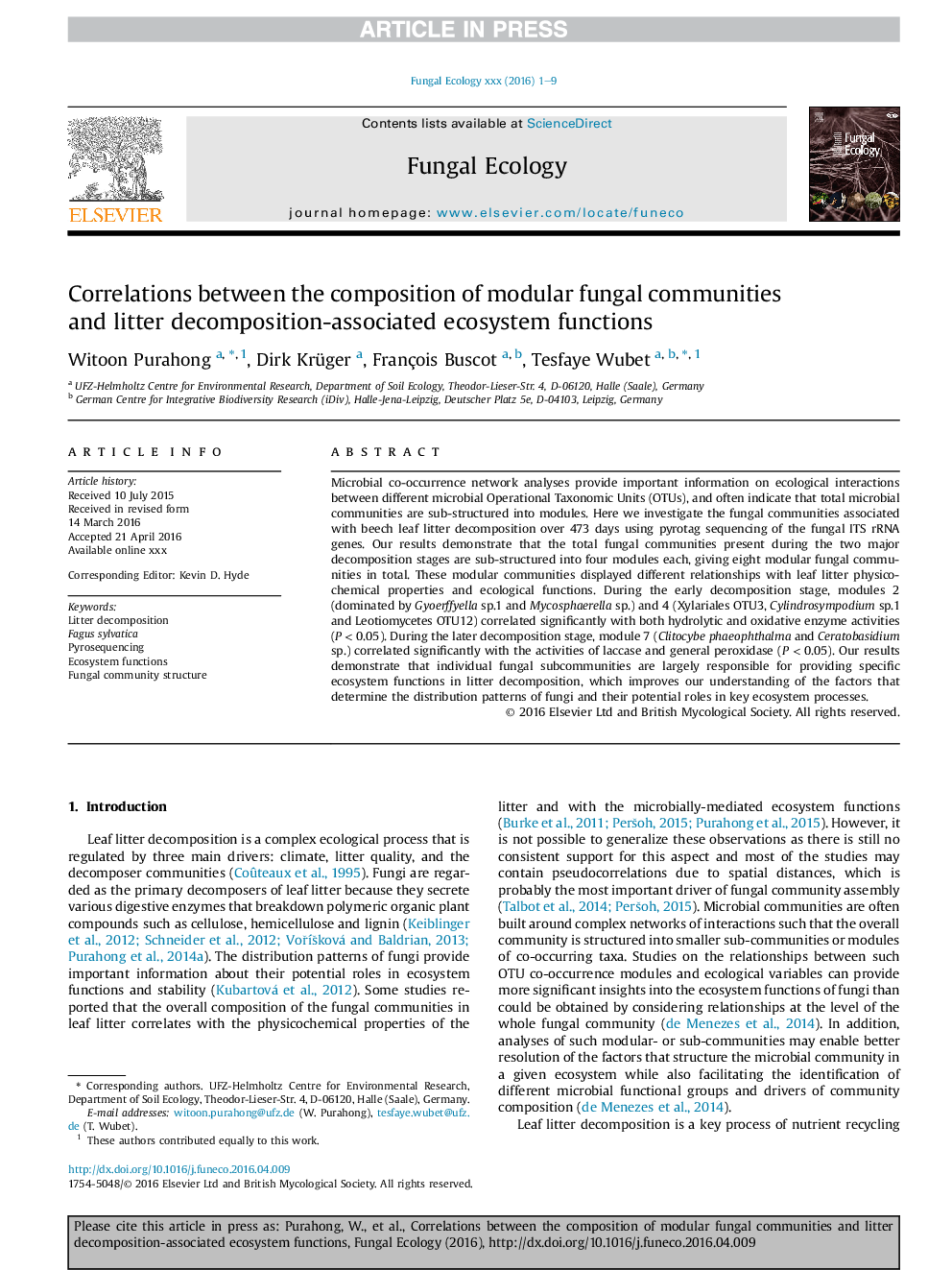| Article ID | Journal | Published Year | Pages | File Type |
|---|---|---|---|---|
| 8384388 | Fungal Ecology | 2016 | 9 Pages |
Abstract
Microbial co-occurrence network analyses provide important information on ecological interactions between different microbial Operational Taxonomic Units (OTUs), and often indicate that total microbial communities are sub-structured into modules. Here we investigate the fungal communities associated with beech leaf litter decomposition over 473 days using pyrotag sequencing of the fungal ITS rRNA genes. Our results demonstrate that the total fungal communities present during the two major decomposition stages are sub-structured into four modules each, giving eight modular fungal communities in total. These modular communities displayed different relationships with leaf litter physicochemical properties and ecological functions. During the early decomposition stage, modules 2 (dominated by Gyoerffyella sp.1 and Mycosphaerella sp.) and 4 (Xylariales OTU3, Cylindrosympodium sp.1 and Leotiomycetes OTU12) correlated significantly with both hydrolytic and oxidative enzyme activities (PÂ <Â 0.05). During the later decomposition stage, module 7 (Clitocybe phaeophthalma and Ceratobasidium sp.) correlated significantly with the activities of laccase and general peroxidase (PÂ <Â 0.05). Our results demonstrate that individual fungal subcommunities are largely responsible for providing specific ecosystem functions in litter decomposition, which improves our understanding of the factors that determine the distribution patterns of fungi and their potential roles in key ecosystem processes.
Keywords
Related Topics
Life Sciences
Agricultural and Biological Sciences
Ecology, Evolution, Behavior and Systematics
Authors
Witoon Purahong, Dirk Krüger, François Buscot, Tesfaye Wubet,
